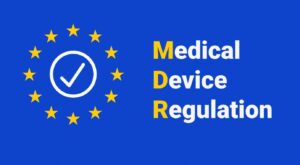EU MDR Poses Challenges for Manufacturers

DMYTRO YARMOLIN / ISTOCK / GETTY IMAGES PLUS VIA GETTY IMAGES
Prioritizing compliance with European Union Medical Device Regulations (EU MDR), especially for legacy products, can be daunting, despite the extension of EU MDR deadlines from 2026 to 2028.
To provide an overview of EU MDR, we turned to Abhishek (Abhi) Gautam, MS, EMBA, who is an executive engineer at DDL Inc., an ISO/IEC 17025 accredited full-service testing lab that provides package, product, and materials testing to the medical device and pharmaceutical industries, headquartered in Eden Prairie, Minnesota.
Gautam will also speak on EU-MDR Extension at the upcoming MD&M South, in Charlotte, NC.
What are the major roadblocks for medical device manufacturers (MDMs) to achieve EU MDR compliance?
Gautam: There are several roadblocks that MDMs face in light of the EU MDR, but the nature of complexity is highly dependent on the classification of product, the length of time in market, the diversity of portfolio, and the historical data availability. Larger, more mature MDMs may have a plethora of legacy devices to manage, while newer and/or smaller MDMs may not be abreast with the EU MDR regulations, or not well prepared.
Resourcing, budgetary concerns, and prioritization are a constant challenge, due to ongoing revenue impacting projects, such as new product or supply chain continuity. Nevertheless, regulatory standards continue to update, thus keeping MDMs on their toes.
Do the challenges differ between existing CE Mark devices and devices yet to be sold in the EU?
Gautam: Yes. For example, current or legacy devices are currently commercial with completed design history files. Revising a design history file (DHF) to address newer requirements, per EU MDR, may require the entire DHF to be updated.
For new products, one major challenge is not understanding and translating the EU MDR requirements, therefore poor integration within ongoing projects. Another obstacle is process conflict between ongoing projects under previous requirements, and new projects — especially for EU MDR requirements embraced by teams. Close management of project teams to ensure strict adherence to EU MDR requirements is a third challenge.
Changing requirements in procedure and on paper is one thing, while making sure that the requirements are clearly followed every time is another.
How can manufacturers overcome these obstacles?
Gautam: MDMs can get ahead of the EU MDR requirements and address many of the roadblocks by first, accurately understanding all the facets of Annex I – General Safety and Performance Requirements. Annex 1 is wide-reaching in its implications, covering multiple facets pertinent to the manufacture of sterile products. These include product types, processes and technologies, quality risk management, applicability beyond sterile products, and minimum requirements.
Secondly, creating a greater value-add can be well answered by proactive planning and driving innovation strategies.
How successful have manufacturers been in attaining compliance?
Gautam: Based on different classifications of medical devices, history in market, diverse portfolios, ongoing mergers and acquisitions, and imminent revenue driving projects, MDMs have progressed at a varying speed in attaining compliance. Some are completing their programs, while others are still battling gap closures.
MDMs who have been successful or are ahead in the EU MDR race have made investments in the program and have been proactive in planning, execution, and objective completion of refiling work.
What is the likely impact of EU MDR?
Gautam: EU MDR is starting to impact go-to-market (GTM) business strategies and could negatively impact the EU region with less innovation and more companies launching in the United States vs. EU.
It is clear that the intent of EU MDR is to make products safer for patients and better product traceability. Ultimately, EU MDR will make the EU space much more secure and safer for patients.
However, one of the major impacts EU MDR has had is its potential risk to continuity of healthcare, especially by discontinuation of products that do not meet EU MDR. Fortunately, there is consideration now made through the EU MDR extension to ensure that provision of healthcare is not at risk. However, this extension should not be another reason for MDMs to deprioritize EU MDR work.
Do you advocate changing any aspect of EU MDR?
Gautam: EU MDR, like any standards, is a living governance which will need to evolve over time. As more companies continue to certify the new requirements, and as notified bodies become more fluent in recertifications and new certifications, areas of opportunities will arise and amendments to EU MDR will occur. These may include container closure integrity testing (CCIT) regulations, stability requirements, human factors/aseptic presentation, traceability requirements, use of field data, and labeling symbols.
Article Source: Bob Kronemyer









